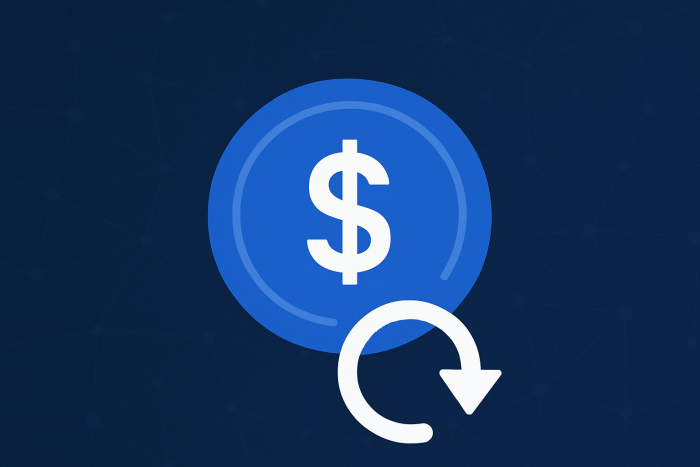One of the foundational principles of blockchains and cryptocurrencies has always been immutability: once a transaction is confirmed, it cannot be undone. That principle has driven much of the trust in crypto systems. But as crypto seeks deeper integration with traditional finance and mass adoption, that immutability constraint may be revisited.
Enter the idea of reversible transactions — mechanisms by which certain stablecoin or payment-layer transactions can effectively be reversed, refunded, or countermanded under specific conditions (fraud, disputes, etc.).
This concept is controversial — it sits at tension with the core ethos of crypto — but it might become a key differentiator for stablecoins and payments rails trying to bridge the gap to regulated finance.
Why Reversible Transactions Are Being Considered Now
-
Bridging Crypto & Traditional Finance Expectations
In traditional finance and payments, reversibility (e.g. chargebacks, refunds) is baked in. For crypto to be accepted in commerce, many merchants, banks, and users demand some recourse mechanisms for fraud or errors. -
Regulatory and Compliance Pressure
In many jurisdictions, payments systems are required to offer consumer protections, refunds, and dispute resolution. A pure immutable model can clash with those regulatory expectations. -
Stablecoin Issuers Experimenting
Some stablecoin projects are exploring architectures that decouple the base ledger from “refund layers.” In other words, the blockchain records an irreversible transaction, but an overlay or side protocol may allow counter-transactions (refunds) under controlled conditions.
— For example, Circle (issuer of USDC) has discussed novel ideas in this direction.
— In academic work, stablecoin design papers consider “reconciliation layers” or “counterpayment layers” that support reversals, without altering the original ledger. -
Better Onboarding for Corporate and Institutional Users
Large enterprises or payment processors may be more comfortable working with crypto if they can integrate dispute-resolution workflows similar to those in legacy payments. Having a reversible component could reduce one big friction barrier.
Key Design Challenges & Tradeoffs
Designing reversible transactions in crypto involves deep tradeoffs. Some of the core challenges:
| Challenge | Description | Possible Mitigation |
|---|---|---|
| Maintaining Trust & Finality | If reversals are too broad or opaque, users lose confidence that “once settled, it’s final.” | Limit reversal windows (e.g. only within a short timeframe), require multi-party consensus. |
| Centralization Risks | Who has the power to reverse? A centralized authority? A consortium? That risks undermining decentralization. | Use multisig or decentralized governance for reversal authority; fixed rules embedded in smart contracts. |
| Dispute & Fraud Management | How do you verify which transactions merit reversal vs. which are malicious? | Introduce trusted oracles, arbitration protocols, escrow mechanisms. |
| Accounting & Audit Complexity | Reversals complicate auditing, financial statements, and tax treatment. | Design clear logging, transparent audit trails, and regulatory alignment. |
| Interoperability with Immutable Chains | How does a reversal overlay interact with blockchains that refuse changes? | Keep reversals off-chain or as side protocols that don’t rewrite core chain history. |
Implications for Stablecoins, Payments & OTC Markets
-
Differentiated Product Tiering
Stablecoin projects may offer “standard immutable mode” vs “business mode with reversibility and dispute tools” — the latter priced differently, with more safeguards. -
Use in B2C Payments & Merchant Adoption
Reversible transactions make stablecoins more palatable for everyday commerce, refunds, subscriptions, and customer service workflows. -
Impact on OTC & Institutional Flows
For large OTC trades, reversals may have limited use (due diligence already pre-trade). But for settlement of invoices, payroll, cross-border payments, the ability to guard against fraud or errors could increase corporate adoption. -
Regulation & Consumer Protection
Jurisdictions may start mandating limited reversal or remediation rights in crypto payments, especially when consumer funds are involved. Projects that already embed them will have a regulatory head start.
What This Means for CoinForge Capital
-
Advisory Edge
As clients look to integrate crypto payments or stablecoins into their stacks, CoinForge can emerge as a thought leader by advising on reversible-transaction design, escrow flows, and dispute protocols. -
Product Differentiation
You might offer “enhanced settlement services” that bundle a controlled reversal window (e.g. 1-2 hours) for certain payment rails — a middle ground between pure OTC trading and merchant payment infrastructure. -
Risk Management & Safeguards
If you introduce any reversal capability, it’s crucial to architect guardrails, logs, permissioning, and audit mechanisms. You’d need to clearly communicate which transactions are irreversible vs reversible, and under what conditions. -
Regulatory & Market Positioning
Promoting a stablecoin or payment rail with built-in reversibility could position CoinForge favorably with regulators, banks, and enterprise clients who worry about consumer risks.






